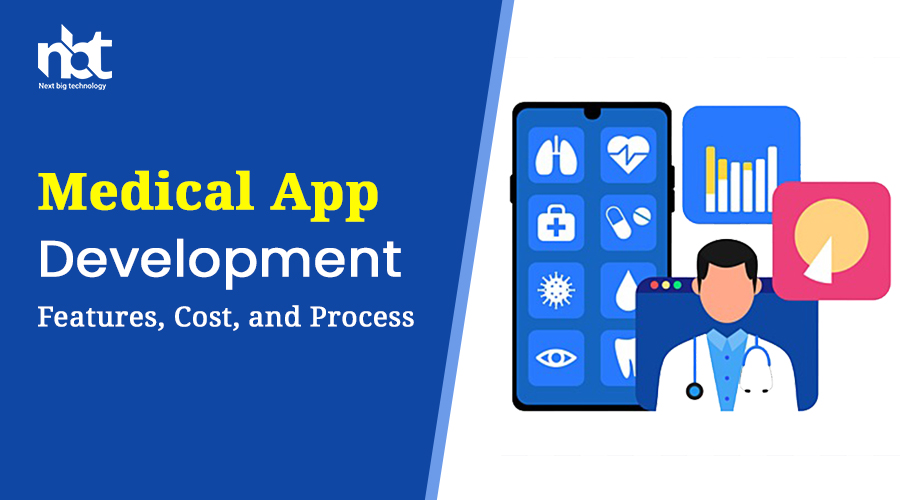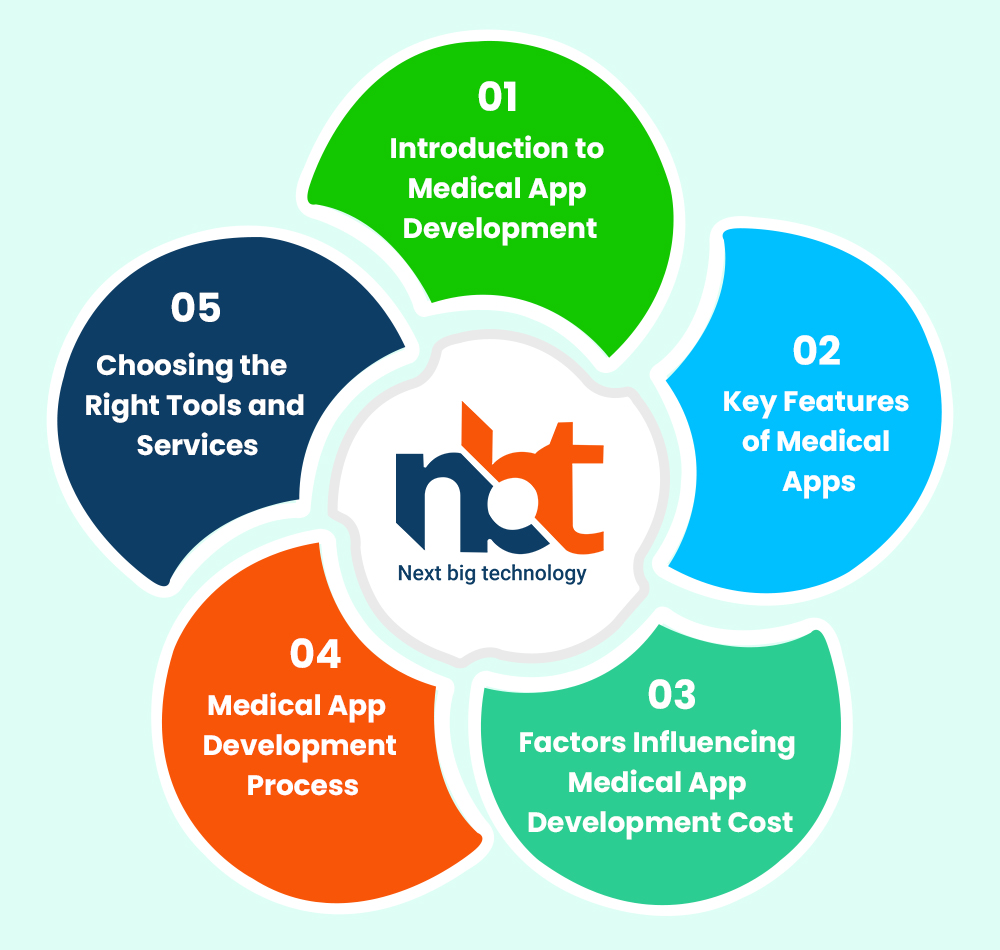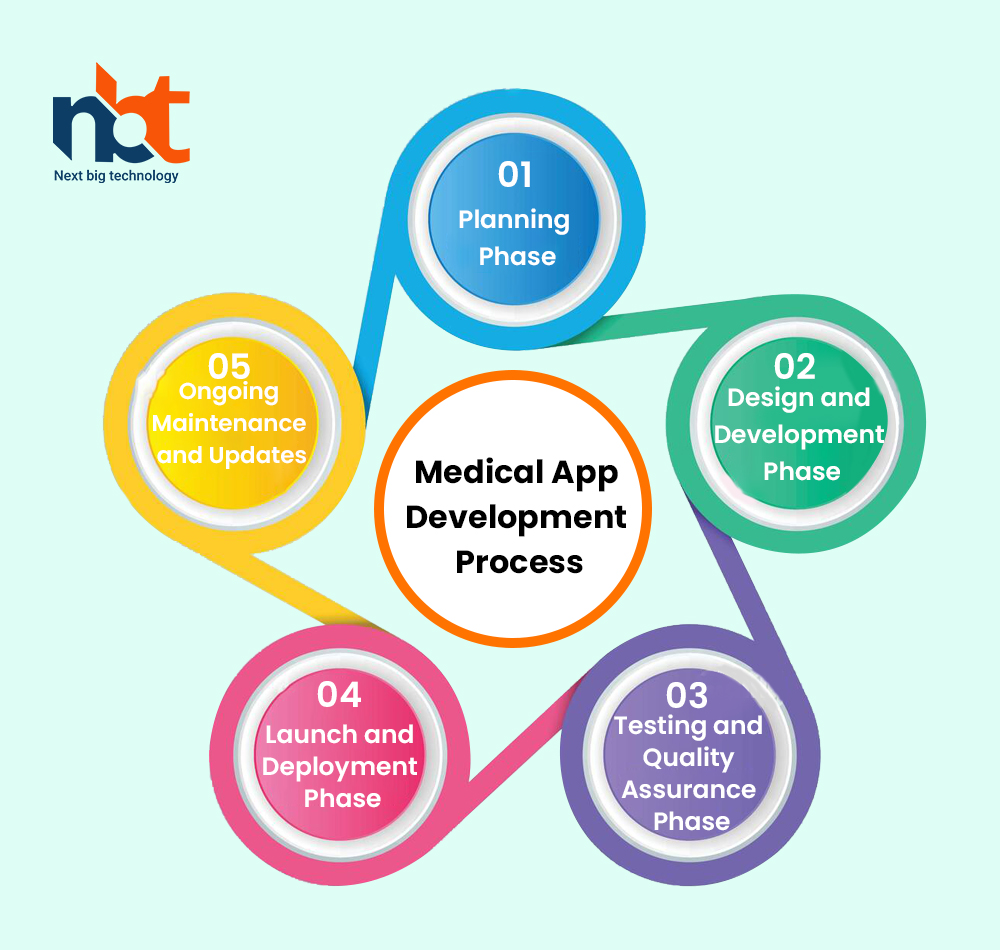In the era of digital healthcare, medical app development has revolutionized patient care, doctor-patient communication, and overall health management. These apps offer a wide range of functionalities, from monitoring vital signs to scheduling appointments, and they provide valuable resources to both healthcare professionals and patients. This comprehensive guide explores the key features, cost considerations, and step-by-step process involved in developing a medical app that enhances healthcare delivery and improves patient outcomes.
Table of Contents
Introduction to Medical App Development
- Understanding Medical Apps: Defining the role of mobile applications in the healthcare industry.
- Significance of Digital Health Solutions: Highlighting the benefits of medical apps for patients and healthcare providers.
Key Features of Medical Apps
Appointment Scheduling and Reminders:
- Booking Appointments: Allowing patients to schedule appointments with doctors.
- Appointment Reminders: Sending notifications to patients for upcoming appointments.
Health Records and Monitoring:
- Electronic Health Records (EHR): Storing and accessing patients’ medical history, test results, and diagnoses.
- Vital Signs Monitoring: Integrating with wearable devices to track heart rate, blood pressure, etc.
Medication Tracking:
- Medication Reminders: Sending alerts to patients for timely medication intake.
- Dosage and Instructions: Providing detailed information about prescribed medications.
Telemedicine and Virtual Consultations:
- Video Consultations: Enabling remote doctor-patient interactions through video calls.
- Secure Communication: Ensuring privacy and security during virtual consultations.
Health Information and Resources:
- Health Tips and Articles: Offering informative articles on various health topics.
- Symptom Checker: Providing a tool to help users assess their symptoms.
User Profiles and Privacy:
- User Registration: Allowing patients to create accounts to access personalized features.
- Data Privacy: Implementing robust security measures to protect sensitive medical data.
Emergency Services:
- Emergency Contacts: Displaying emergency numbers for immediate assistance.
- Location Sharing: Enabling users to share their location during emergencies.
Factors Influencing Medical App Development Cost
- Features and Functionality: The complexity and number of features integrated into the app.
- Design and User Experience: Creating an intuitive interface that’s easy for users to navigate.
- Integration with External Devices: Developing compatibility with wearable health monitoring devices.
- Telemedicine Integration: Incorporating secure video conferencing and communication tools.
- Data Security and Compliance: Ensuring adherence to medical data protection regulations.
- Customization and Branding: Adding unique design elements and branding.
- Ongoing Maintenance: Regular updates, security checks, and technical support.
Medical App Development Process
1. Planning Phase
- Identify App Objectives: Define the primary purpose of the app (e.g., appointment scheduling, health monitoring).
- Feature List: Compile a comprehensive list of features required for the app.
- User Experience (UX) Design: Outline the app’s user flow and interface design.
- Platform Selection: Choose the target platforms (iOS, Android, or both).
2. Design and Development Phase
- Wireframing and Prototyping: Create wireframes to visualize the app’s layout and navigation.
- User Interface (UI) Design: Design visually appealing screens that align with the app’s purpose.
- Backend Development: Build the backend infrastructure to handle user data and app functionality.
- Integration with APIs: Integrate APIs for features like appointment scheduling, health data syncing, etc.
3. Testing and Quality Assurance Phase
- Functional Testing: Verify that all app features work as intended.
- Usability Testing: Involve users to test the app’s usability and provide feedback.
- Security Testing: Ensure data security and privacy measures are in place.
- Compatibility Testing: Test the app on different devices and screen sizes.
4. Launch and Deployment Phase
- App Store Submission: Prepare and submit the app to the respective app stores (Apple App Store, Google Play Store).
- Promotion and Marketing: Create a strategy to promote the app and attract users.
- User Onboarding: Provide user guides or tutorials to help users navigate the app.
- Analytics Setup: Implement analytics tools to track user engagement, feature usage, and user behavior.
5. Ongoing Maintenance and Updates
- Regular Updates: Continuously improve the app by adding new features and enhancements.
- Bug Fixes: Address technical issues promptly to ensure smooth app functionality.
- Security Updates: Regularly update security measures to protect user data.
- Technical Support: Provide customer support to address user inquiries and issues.
6. Choosing the Right Tools and Services
- App Development Platforms: Explore development platforms like React Native, Flutter, or native app development.
- Telemedicine Integrations: Consider integrating platforms like Zoom or custom telehealth solutions.
- Wearable Device Compatibility: Utilize SDKs and APIs to connect with wearable health monitoring devices.
- Analytics Tools: Implement tools like Google Analytics or Mixpanel to track user behavior.
- Data Security: Ensure compliance with regulations like HIPAA for medical data security.
Conclusion
Medical app development has transformed healthcare by offering innovative solutions that improve patient care, communication, and engagement. The features you incorporate, the design complexity, and the ongoing maintenance efforts all contribute to the overall cost. By following a structured development process, leveraging appropriate tools, and prioritizing user experience, security, and compliance, you can create a medical app that empowers patients, enhances doctor-patient interactions, and contributes to the advancement of digital healthcare solutions.




















